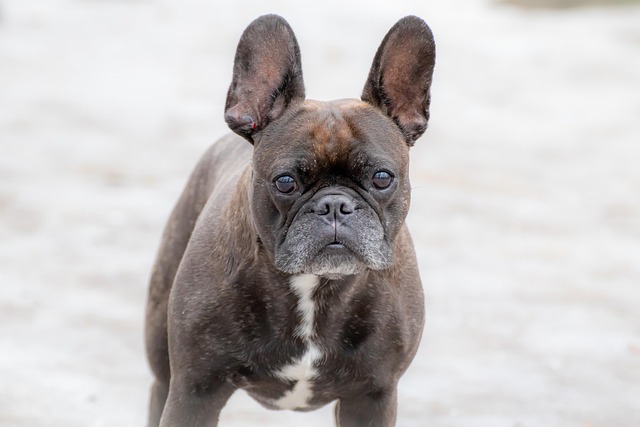
What is glaucoma in a dog?
You might notice your dog squinting more at mealtime or avoiding bright sunlight—these small changes could be early signs of a serious eye condition.
If you’ve ever leaned in to kiss your pup’s forehead and noticed their eye looks pink and puffy, with goopy discharge clinging to their lashes, you’re probably dealing with conjunctivitis. A first-time dog parent in Ohio texted me last week, worried about her 8-month-old border collie: “Her left eye is all red, and she keeps rubbing it with her paw—can I use my human eye drops, or will that hurt her?” Conjunctivitis (often called “pink eye”) is common in dogs, but the wrong drops can make it worse. Let’s break down what’s safe, how to use it, and when to call the vet.
First, why dogs need special drops. A dog’s eye has a different pH balance than ours—more neutral, which means human eye drops (even “gentle” ones) can irritate their delicate tissues. Many human formulas have ingredients like tetrahydrozoline (a decongestant) that are toxic to dogs if absorbed, causing vomiting or lethargy. Conjunctivitis in dogs is usually caused by bacteria (like staph), allergies, or even a scratch on the cornea—each needs a specific treatment. A 2022 study in Veterinary Ophthalmology found that 70% of mild cases are bacterial, responding well to vet-approved antibiotic drops, but guessing the cause (and using the wrong drops) can let the infection spread.
So what can you use? Start with vet-recommended options. For mild bacterial cases, your vet might prescribe drops with ciprofloxacin or gentamicin—these kill bacteria without harming their eyes. Over-the-counter artificial tears (plain, no preservatives) can soothe dry, irritated eyes from allergies, but they won’t fight infection. My neighbor in Colorado uses these for her golden retriever during pollen season: “A drop in each eye after our morning walk keeps his eyes from getting goopy.”

Never use “home remedies” like salt water or milk—they disrupt the eye’s natural balance, making irritation worse. And skip steroid drops (like prednisone) unless your vet says yes—they can worsen infections if used incorrectly.
Here’s how to apply drops gently. Sit with your dog in your lap, facing away from you. Tilt their head back slightly, use one hand to lift the upper eyelid (like you’re checking for a contact lens), and squeeze 1 drop into the “pocket” between the lid and eye. Let them blink—they’ll spread the drop naturally. Reward with a tiny treat (freeze-dried chicken works) afterward. A friend in Texas trained her shih tzu with this trick: “I say ‘eye time!’ and she sits—she knows a treat is coming, so she barely flinches.”
Now, when to skip home treatment. If your dog’s eye is swollen shut, has blood or thick yellow/green discharge, or they’re squinting in pain—call the vet. These could signal a corneal ulcer or viral infection (like distemper), which needs prescription meds. Similarly, if drops don’t work in 2-3 days, don’t wait—delayed treatment can lead to vision loss.
Let’s tie this to real-world norms. Legally, keeping your dog’s rabies vaccine current (required in all U.S. states) is key—some viral infections that cause conjunctivitis (like canine adenovirus) are prevented by core vaccines. When out walking, if your dog has goopy eyes, keep them away from other dogs—bacterial conjunctivitis can spread through shared water bowls. Always carry poop bags, even if their eyes are bothering them—fines for leaving waste hit $250 in Seattle.
In apartments, wipe discharge from their fur with a warm, damp cloth daily—this keeps crust from forming and prevents spread to their other eye. Avoid using air fresheners or candles, which can irritate sensitive eyes. And never scold your dog for rubbing their eye—they’re in discomfort, not being “bad.” Use positive reinforcement, like you would for training, to make drop time stress-free.
At the end of the day, the best eye drops are the ones your vet recommends. They’ll check for scratches or allergies, ensuring you’re treating the cause, not just the symptoms. With gentle care and a little patience, your pup’s eyes will be bright and clear again—ready for all those forehead kisses.

You might notice your dog squinting more at mealtime or avoiding bright sunlight—these small changes could be early signs of a serious eye condition.

Let’s set the scene: It’s a sweltering Phoenix afternoon—105°F outside—and you rushed your 2-year-old Lab mix, Cooper, on a quick walk to “get it over with.”

Let’s get real: You’re in your Miami apartment, watching your 3-year-old Corgi, Loki, struggle to climb the stairs to your second-floor unit.

Many dog owners brush off occasional scratching as just “dog behavior,” but persistent itching often signals something more—like a food allergy.

You might first notice your dog scratching more than usual—chewing at their paws until the fur looks thin, or rubbing their face against the couch nonstop.

Let’s be real: You’re standing in your Chicago apartment, watching your 3-year-old Beagle, Max, huff and puff just to climb onto the couch.